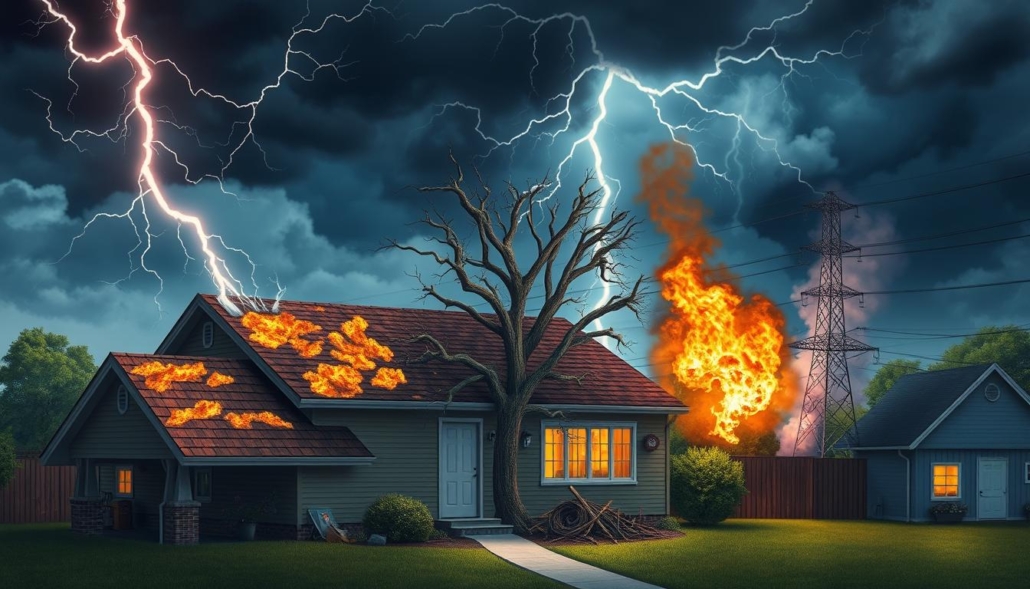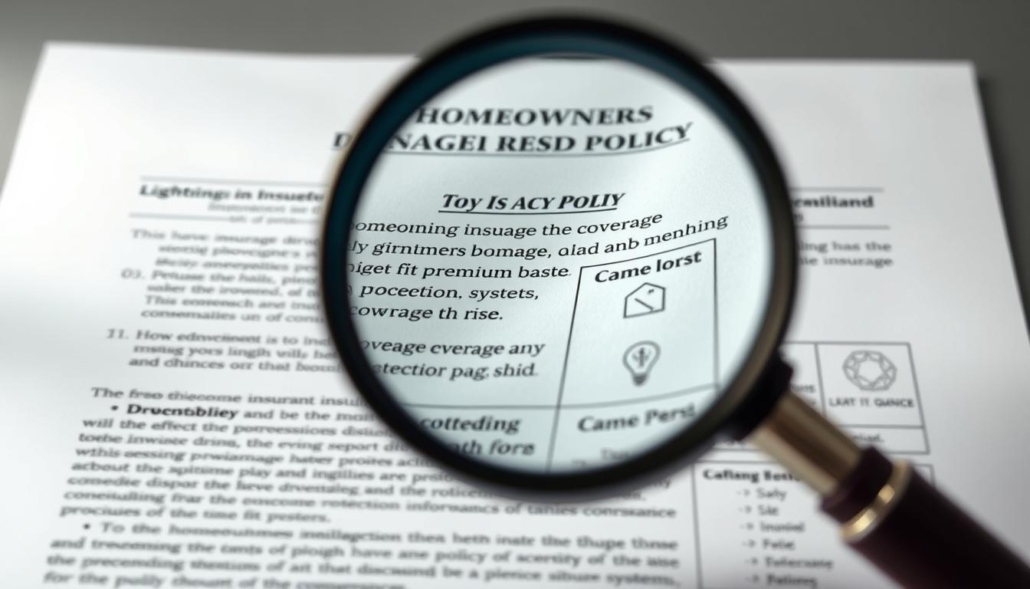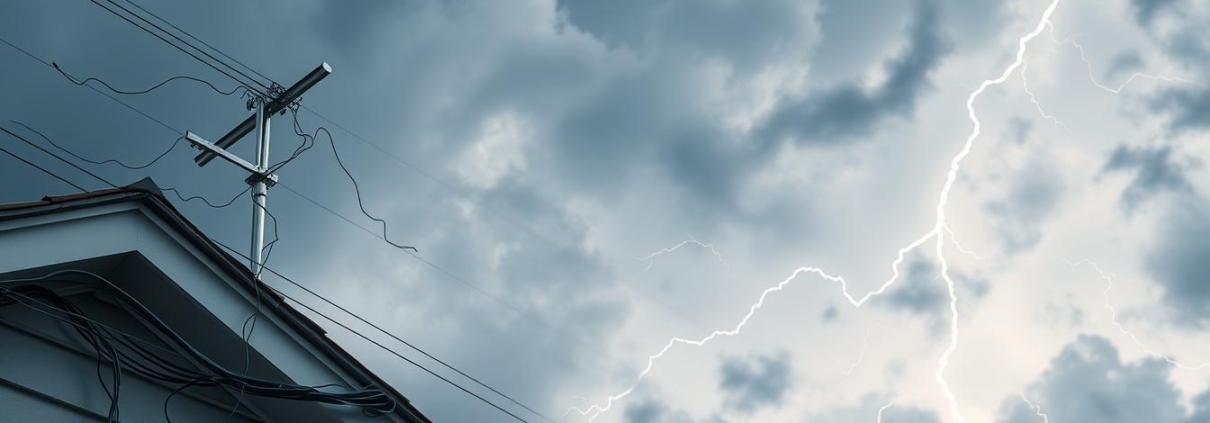Does homeowners insurance cover lightning damage, and will installing protection lower my premiums?
Every year, lightning strikes cause over $1 billion in property losses across the United States. This natural force can ignite fires, fry electronics, and even split trees, leaving behind costly repairs. If your property gets hit, will your policy step in?
Most standard policies include protection against sudden events like electrical surges or structural harm caused by storms. However, coverage details matter. Deductibles and limits vary, so reviewing your plan is crucial.
Adding safeguards like surge protectors or lightning rods might help reduce risk and possibly lower costs. Some providers offer discounts for these upgrades, though requirements differ. We’ll explore how proactive steps could benefit your wallet.
For personalized advice tailored to your situation, give us a call at (813) 630-2757. Up next: We’ll break down claim processes and prevention tips to keep your property safe.
Understanding Lightning Damage and Home Insurance Basics

A single bolt packs up to 1 billion volts of electricity, according to National Geographic. This raw power can wreak havoc on structures and belongings in two distinct ways: direct hits and secondary impacts.
Types of Lightning Damage
Direct strikes leave visible marks like:
- Burned roof shingles or siding
- Punctured walls from superheated air
- Split trees that collapse onto buildings
Indirect effects often cause hidden issues. Power surges triggered by nearby strikes can fry electronics, melt wiring, and overload appliances. The National Weather Service notes these secondary events account for over 30% of lightning-related losses.
Direct and Indirect Effects on Your Home
Your TV, computers, and kitchen gadgets face the highest risk from electrical surges. While some policies replace these items, coverage limits often apply. Structural repairs for fire damage or cracks usually fall under standard protection.
Review your plan’s fine print to confirm what’s included. Need help decoding the details? Our team’s just a call away at (813) 630-2757.
When homeowners’ insurance covers lightning damage: Policy Insights

Not all storm-related issues are treated equally by providers. Most standard plans address sudden events like electrical surges or structural harm from weather. But specifics matter—what exactly gets repaired or replaced?
Structural Repairs vs. Belongings Replacement
If a strike ignites a blaze or fries wiring, repairs to walls, roofs, and built-in systems typically qualify for reimbursement. Personal items like TVs or kitchen gadgets may also be included, but often with caps. For example:
- Furniture scorched by fire
- Melted circuit boards in smart devices
- Cracked foundations from the ground current
Outdoor features like sheds or fences might have lower coverage limits than main structures. Industry reports show surge-related claims average $10,000–$15,000 per incident, highlighting why reviewing limits matters.
Always check your deductible and any special clauses. Some plans exclude antique electronics or require separate riders for high-value items. Questions? Dial (813) 630-2757 to clarify your unique situation before storms strike.
Assessing Your Risk: Is Your Home Prone to Lightning Strikes?
Your property’s vulnerability depends on more than luck. Geography and surroundings play starring roles in determining strike likelihood. Let’s explore how your address and environment influence exposure.
Location Matters More Than You Think
Homes perched on hills or near tall trees face higher risks. The National Weather Service notes that elevated areas act like natural magnets for electricity discharges. Dense tree coverage? Those branches create pathways for strikes to reach structures.
| Factor | Risk Level | Impact Area |
|---|---|---|
| Elevation Above Surroundings | High | Roof, Chimneys |
| Tree Density Within 100 ft | Moderate-High | Wiring, Landscaping |
| Proximity to Water Bodies | Moderate | Outdoor Electronics |
Regional weather patterns also matter. Florida’s “Lightning Alley” sees triple the strikes of California’s coast. Check local maps—areas with frequent thunderstorms increase your odds.
Secondary effects often surprise residents. A nearby strike can send power surges through utility lines, frying TVs and computers. One study found 45% of surge-related claims involved entertainment systems.
In severe cases, structural harm might force temporary relocation. While policies often cover hotel costs, prevention beats displacement. Need personalized risk analysis? Our team’s ready at (813) 630-2757 to evaluate your unique situation.
Filing a Lightning Damage Insurance Claim
When a storm leaves your property in disarray, knowing how to file a claim efficiently can make all the difference. Proper documentation and understanding the claims process are essential for a smooth recovery.
Documenting the Damage
Act quickly to capture evidence after an incident. Take photos of visible issues like scorch marks or fried appliances. Don’t forget hidden problems—charred wiring inside walls or malfunctioning HVAC systems need professional inspection reports.
Keep a dated log describing what happened. Note unusual events, like flickering lights before the strike. This helps connect indirect effects to the main event. Independent electricians or contractors can provide third-party validation for tricky cases.
Navigating the Claims Process
Contact your provider within 24-48 hours to start the process. Most require written notice via email or their online portal. Be ready to share photos, repair estimates, and any expert assessments you’ve gathered.
A claims adjuster will visit to verify losses. They’ll check if harm aligns with storm timelines and policy terms. Surge-related issues often require extra proof—think utility company reports or smart home device logs showing voltage spikes.
Stay organized: Keep copies of all communication and receipts. If disputes arise, your records become critical. For guidance tailored to your situation, give us a call at (813) 630-2757.
Preventative Measures and Installing Protection
Guarding your property against nature’s electrical fury starts with smart preparation. Proactive steps can shield both your structure and belongings while potentially easing financial burdens down the line.
Channeling Nature’s Power Safely
A professionally installed protection system acts like a highway for electrical surges. These networks of rods and cables divert strikes harmlessly into the earth. Proper installation is key—look for certified specialists who follow National Fire Protection Association standards.
Shielding Your Electronics
Surge protectors serve as bodyguards for gadgets and appliances. Whole-house models defend entire electrical systems, while point-of-use devices protect individual items like computers or refrigerators. For maximum safety:
- Replace aging protectors every 2-3 years
- Choose models with joule ratings matching your devices
- Combine with uninterruptible power supplies for critical systems
Keeping Defenses Strong
Regular maintenance ensures your safeguards stay battle-ready. Schedule annual inspections of protection systems before storm season. Check ground connections for corrosion and clear debris from lightning rod bases. Trim tree branches near electrical lines to reduce fire risks.
These upgrades might qualify for discounts on your policy—many providers reward risk-reduction efforts. Curious how much you could save? Our experts at (813) 630-2757 can review your options.
Additional Considerations for Your Insurance Policy
Navigating policy details requires more than just skimming your documents. Let’s explore how financial thresholds and coverage caps could shape your recovery after a storm.
Understanding Deductibles and Coverage Limits
Your deductible acts like a financial starting line. If lightning causes $8,000 in repairs and your deductible is $1,000, you’ll pay that amount before coverage kicks in. But here’s the catch: policy limits determine the maximum payout, even for valid claims.
Consider these scenarios:
- A surge fries your home theater system ($5,000 value) with a $10,000 electronics limit
- Roof repairs cost $25,000 against a $300,000 dwelling coverage cap
Seasoned adjusters assess damage reports against these numbers. One client received a $14,000 settlement for melted wiring—$3,000 below their claim—because photos proved partial repairs could restore functionality.
Review your plan annually. Did you add solar panels or a smart security system? Update your coverage to match. “Policies should evolve with your life,” advises a Florida-based risk manager. Pro tip: Negotiate higher limits during renewal if local storm patterns intensify.
When storms strike, knowledge becomes power. Give us a call at (813) 630-2757 to ensure your safeguards align with reality.
Conclusion
Protecting your property from electrical storms requires awareness and action. Standard policies typically address both direct strikes and secondary surges, offering financial safety nets for repairs or replacements. Quick documentation and understanding your plan’s specifics remain vital when filing claims.
Remember: Detailed photos, timestamps, and expert assessments strengthen your case with adjusters. Preventative steps like surge protectors or certified protection systems not only reduce risks but might also lead to premium savings through provider discounts.
Storms don’t wait—neither should your preparedness. For tailored guidance on maximizing your safeguards and coverage, reach out today at (813) 630-2757. Let’s ensure your peace of mind matches your property’s protection.




